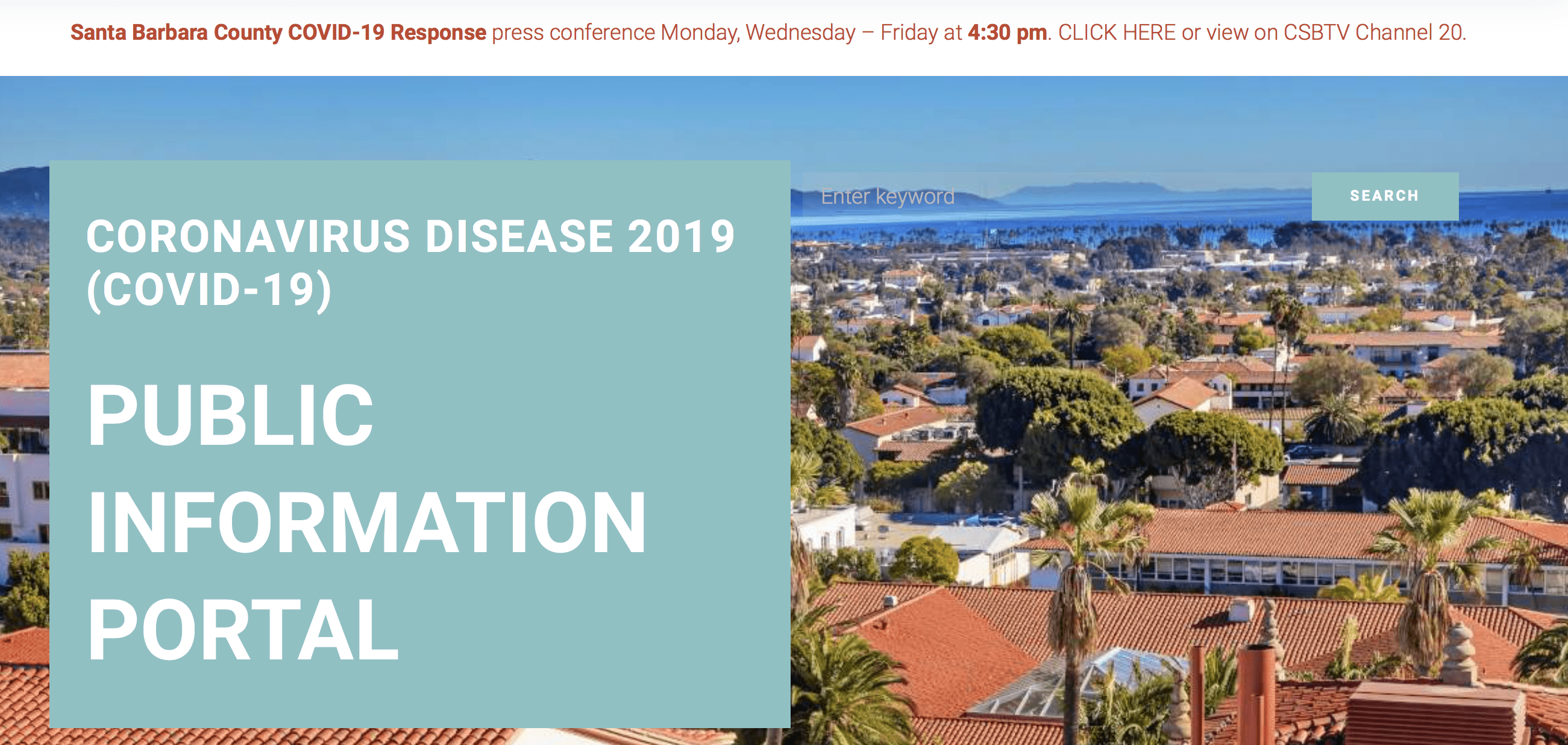Staff Report
In the face of a significant increase in the numbers of confirmed cases of novel coronavirus (COVID-19) in mainland China and other countries, as well as the western U.S., local residents are understandably worried and fearful. The Santa Barbara County Public Health Department (PHD), out of an abundance of caution, is seeking to solidify the county’s readiness should the COVID-19 virus be found here or in a nearby county.
The PHD is urging agencies, businesses, organizations, and health care providers throughout the county to develop and/or update a plan for social distancing within 24-48 hours.
County Health Officer, Dr. Henning Ansorg states, “The discovery of community transmission elsewhere in the state makes me feel that COVID-19 could arrive in our county at any time and we want to be prepared.” Community transmission means person-to-person spread.
“Our first level of protection comes from the quarantine and isolation of certain individuals,” said Dr. Ansorg. He further stressed that these plans will not be put into effect immediately. “Once cases of COVID-19 are found in the community, it will be time to implement social distancing plans.”
Social distancing means lessening contact between individuals throughout the county. Businesses, for instance, would review their staffing and identify workers who could work from home, resulting in fewer people and less contact between people at the workplace. Members of the public should speak with their employer about alternative work plans, such as telecommuting.
A population that is at particular risk from the COVID-19 is the elderly. Extended care facilities are being asked to write or update their plans for protecting their residents from interaction with those from outside their place of residence. While children seem to be less impacted by COVID-19 than other groups, schools have made significant advances in their planning for possible temporary closure. Some schools were closed for weeks during the H1N1 pandemic 10 years ago. It is important that schools and childcare facilities have a plan in place and are communicating with parents.
Primary care medical sites are being asked to implement plans to communicate with patients via Skype, FaceTime and over the phone. Many patient visits can be handled distantly thus avoiding crowding of clinics and the resulting increased risk of close contact that might further spread COVID-19. There is little evidence that pregnant women are at particularly increased risk from this virus, but special care should still be taken to decrease their social contacts.
Gatherings such as religious services might consider live streaming so that congregants can view the service from home, or they may consider modifying their service so that there can be at least two spaces between each congregant.
“The cancelation of large, non-essential gatherings is a possibility down the line,” said Dr. Ansorg. “Implementation of social distancing plans should be handled with creativity, flexibility and sensitivity.”
Above all, people who are starting to feel ill or who are ill, should stay away from others and not go into crowded settings.
People should continue to practice the same habits to prevent themselves from getting the flu. They should wash their hands frequently, elbow or fist bump one another instead of shaking hands or hugging, sneeze or cough into the crook of their elbow and maintain a six-foot or greater distance between themselves and anyone who looks ill. Avoid touching eyes, nose and mouth with unwashed hands. Get a flu immunization to prevent influenza if they have not done so this season. Wearing a surgical face mask is necessary for those who are ill and going out in public, such as going to the doctor’s office. Health care workers interacting with patients should wear an N95 mask.
County PHD is working closely with its healthcare partners to assure screening, testing and care for potential COVID-19 patients. The PHD is providing ongoing guidance and alerts to healthcare partners in close coordination with the state Department of Public Health (CDPH) and the Centers for Disease Control and Prevention (CDC). Healthcare partners, including EMS providers, are participating in weekly teleconferences with the PHD to assure that procedures are in place at each facility to safely screen patients and protect healthcare workers and the community.
The PHD has been working diligently to prepare for the possibility of a COVID-19 case in the county. The team is in daily contact with state and federal officials and agencies and is closely monitoring neighboring counties for possible COVID-19 cases. The PHD Department Operations Center (D.O.C.) has been activated as of March 6. The PHD reminds the community of the steps to take to protect their health and the health of those around them:
-
Wash your hands with soap and water
-
Avoid touching your eyes, nose, or mouth with unwashed hands
-
Avoid close contact with people who are sick
-
Stay away from work, school or other people if you become sick with respiratory
symptoms like fever and cough
For more information about COVID-19 (Coronavirus Disease 2019), please visit the SBCPHD website www.countyofsb.org/phd/ or call the PHD information line at 805-681-4373, and for the most up to date information regarding the novel coronavirus on the national level, please visit the Centers for Disease Control and Prevention at www.cdc.gov/coronavirus/2019-ncov/index.html.





